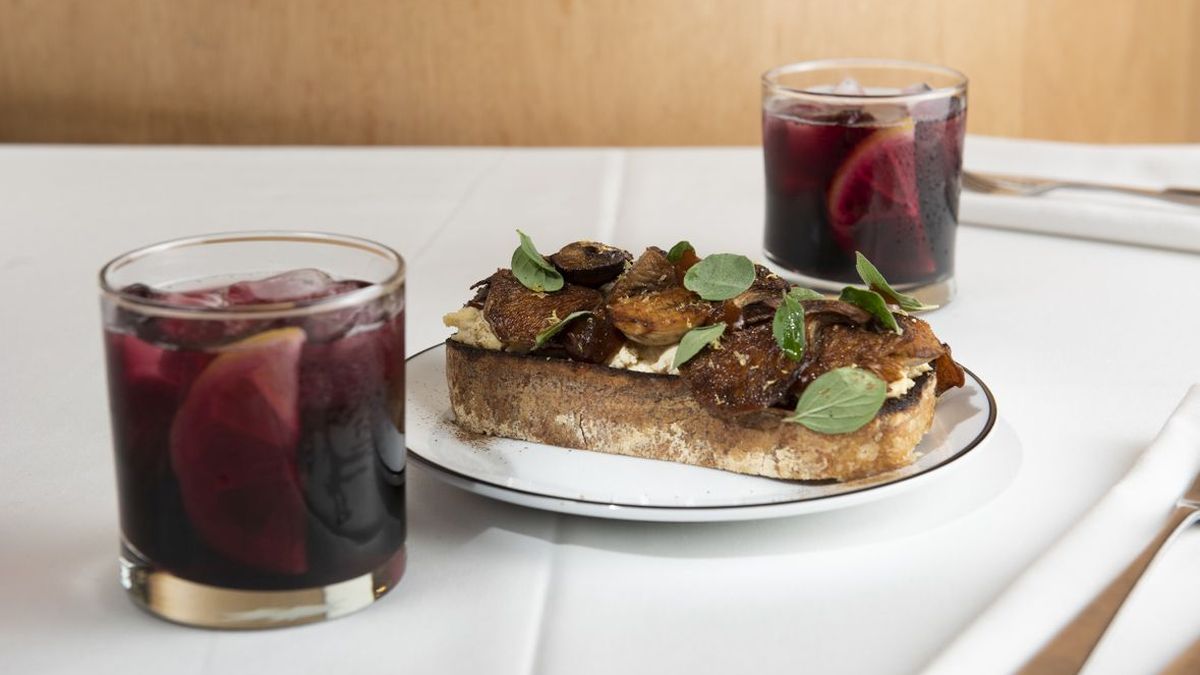Globally, and according to industry estimates, since 2012 some 100 new vermouth brands have been created around the world. Expectations and confidence in the category are high. One of the reasons that explain its growth has to do with the consequences that the pandemic left on consumption habits: the relevance of healthier lifestyles was installed, which led to the growth of lighter, lower alcoholic beverages and refreshing.
¨Our main objective when planning the launch of Cinzano Segundo was to reinforce our leadership and work on 100% local innovation, using Malbec wine as a base, in a new product designed to compete in the premium segment and at the same time add new consumers¨, highlights Maria Carolina GentileMarketing Director of Campari Group Argentina.
The history of Vermouth
¨Talking about vermouth and aperitifs is talking about one of the most important drinks in history (along with wine and beer) ¨, he explains Augustine of Alba. ¨The ancestor of vermouth was Hippocratic wine (wine mixed with wormwood flowers). In 1757, Carlo Stefano Cinzano opened his first herbalist’s shop in Turin (the world’s cradle of vermouth), where he began to serve “the rosso de vermouth” made under his own formula, until in 1776 the Casa Cinzano was appointed as official supplier. of the Royal House of Savoia and the sales of his store gained momentum, which generated an absolute explosion of this drink in Turin society, with the creation of the Court aperitif. In 1800 in Turin the industry of family houses such as Cinzano, Gancia, Martini, etc. flourished. From these origins, a whole series of drinks are adapted or created according to the tastes and traditions of each country: Italy (bitter and sweet and red), France (acid and aniseed and white), Spain (sweet and aniseed and red) ¨, describes the sommelier.
Agustina de Alba.jpg
“Talking about vermouth and aperitifs is talking about one of the most important drinks in history (along with wine and beer),” explains Agustina de Alba.
Vermouth is a category within the world of aperitifs, which also includes bitters and aniseed. A vermouth is a wine-based aperitif (white, red or rosé), to which extracts of herbs, flowers, fruits and spices are added. You can add alcohol, sugar and/or caramel. Its alcoholic graduation can vary between 15 and 20% degrees of alcohol. To be considered as such, vermouth must have at least 75% wine.
¨In the vermouths of the Old World they are personified by a vermouth style, a neutral white wine is sought as a vehicle to express the aromas and flavors provided by the secret herbs of the formula created in 1757 in Turin, Italy¨ highlights the sommelier Augustine of Alba.
Argentine consumers post pandemic
The growth of vermouth clearly makes several of the current consumption trends visible, which, according to data from Kantar, are replicated in Argentina. The consumer has become prone to low-alcohol options, favoring natural ingredients, revaluing ties and closeness, in addition to local production and products of origin.
Consumption at home is a trend that is here to stay. Also, post-pandemic, the ‘afternoon’ emerges strongly: faced with the need to cut the work day at home, the desire to go out for tapas in the afternoon emerges. At this time of consumption, vermouth is stomping because it is a light drink with a low alcohol content that allows you to enjoy the moment in the company of a snack and friends.
Launch Cinzano Segundo 9.jpg

The new premium vermouths grow leveraged on the locality of the ingredients, and they do so more prolifically in those countries that are recognized worldwide for their wines: the United States (in California), Australia, South Africa, and of course, Argentina.
The return of vermouth in a trendy version
After a period in which local consumers looked to the world in search of the latest trends, they found space in local traditions to develop new habits with their own modern characteristics. The bars and coffee shops were remodeled maintaining their style, the classic restaurants were once again filled with people and new vermouth bars were created that take tradition and adapt it to the contemporary world.
Driven in part by the craft movement and supported by the consumption preferences of younger generations, vermouth represented a $1.5 trillion category in 2021, according to IWSR. ¨Today vermouth is more alive than ever, driven not only by benchmarks and leaders in the category such as Cinzano, but also by the emergence of vermouth bars and proposals such as Segundo, which value tradition while updating it to make it relevant. in today’s world”, concludes Gentile.
Source: Ambito
I am an author and journalist who has worked in the entertainment industry for over a decade. I currently work as a news editor at a major news website, and my focus is on covering the latest trends in entertainment. I also write occasional pieces for other outlets, and have authored two books about the entertainment industry.




